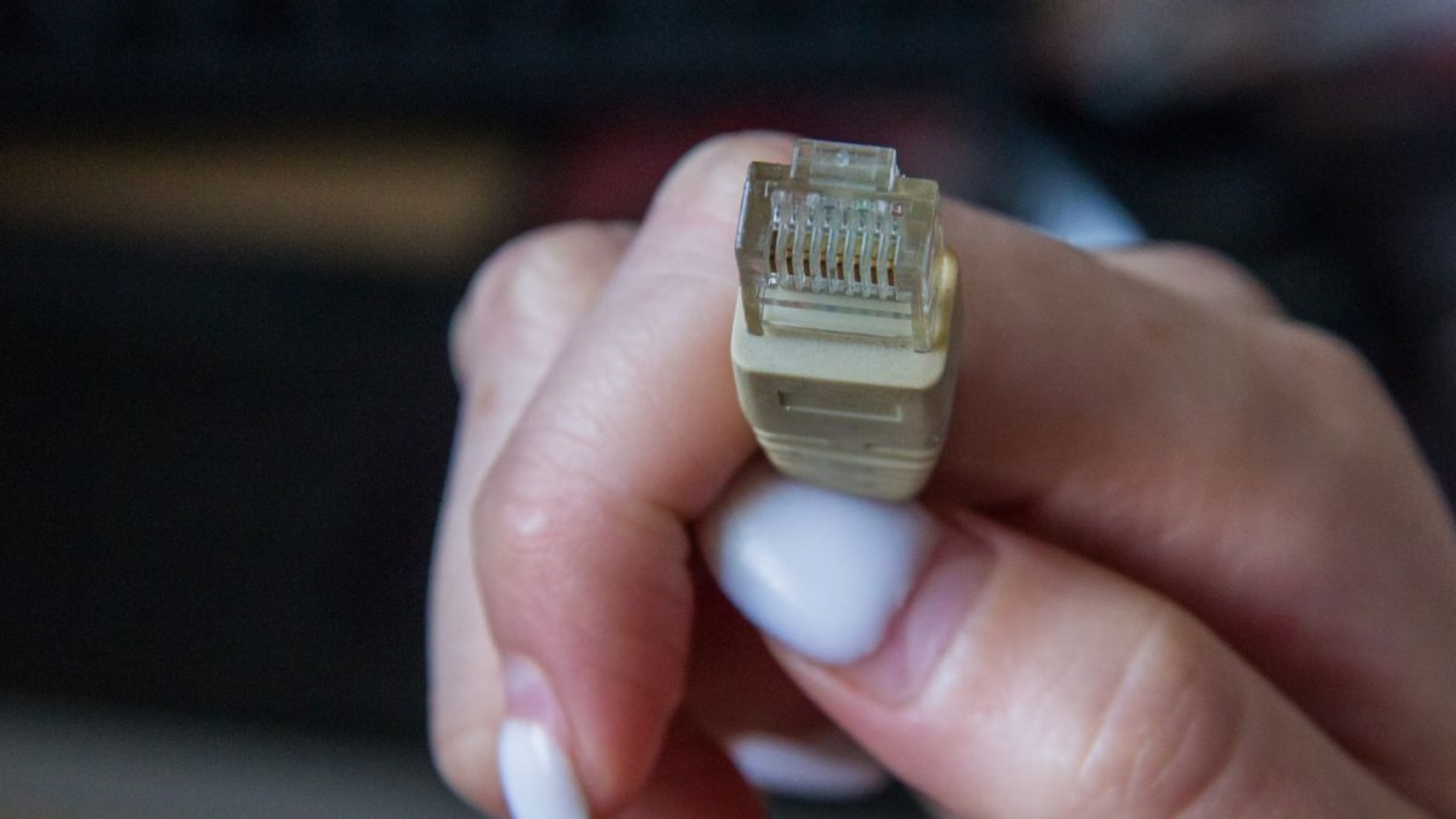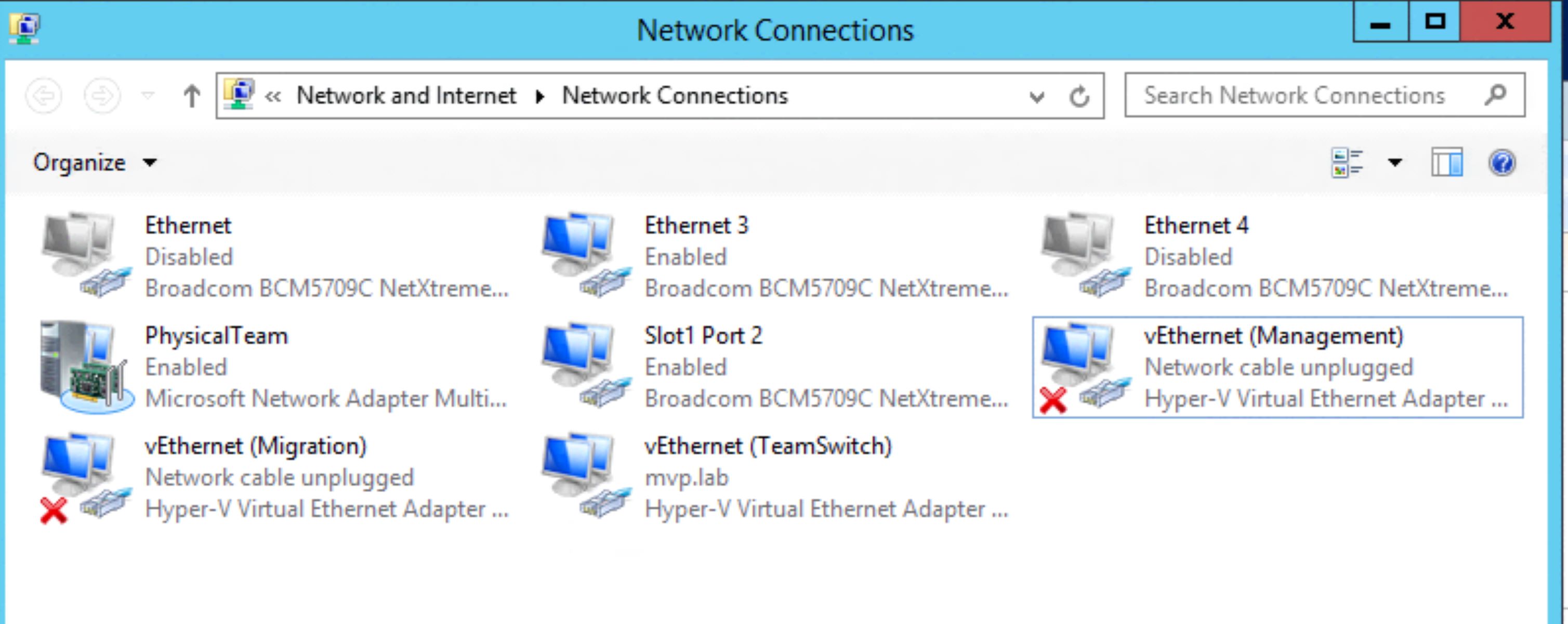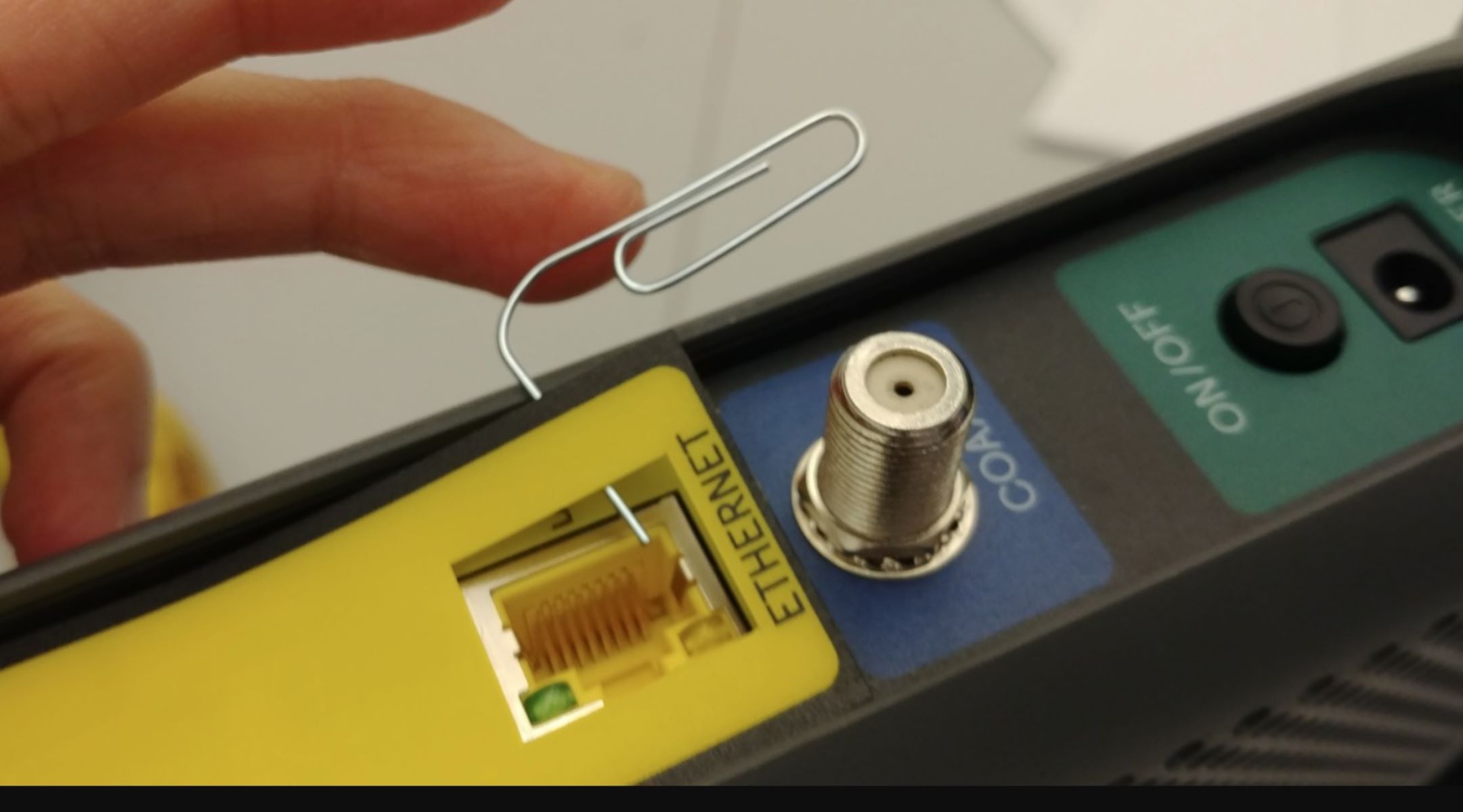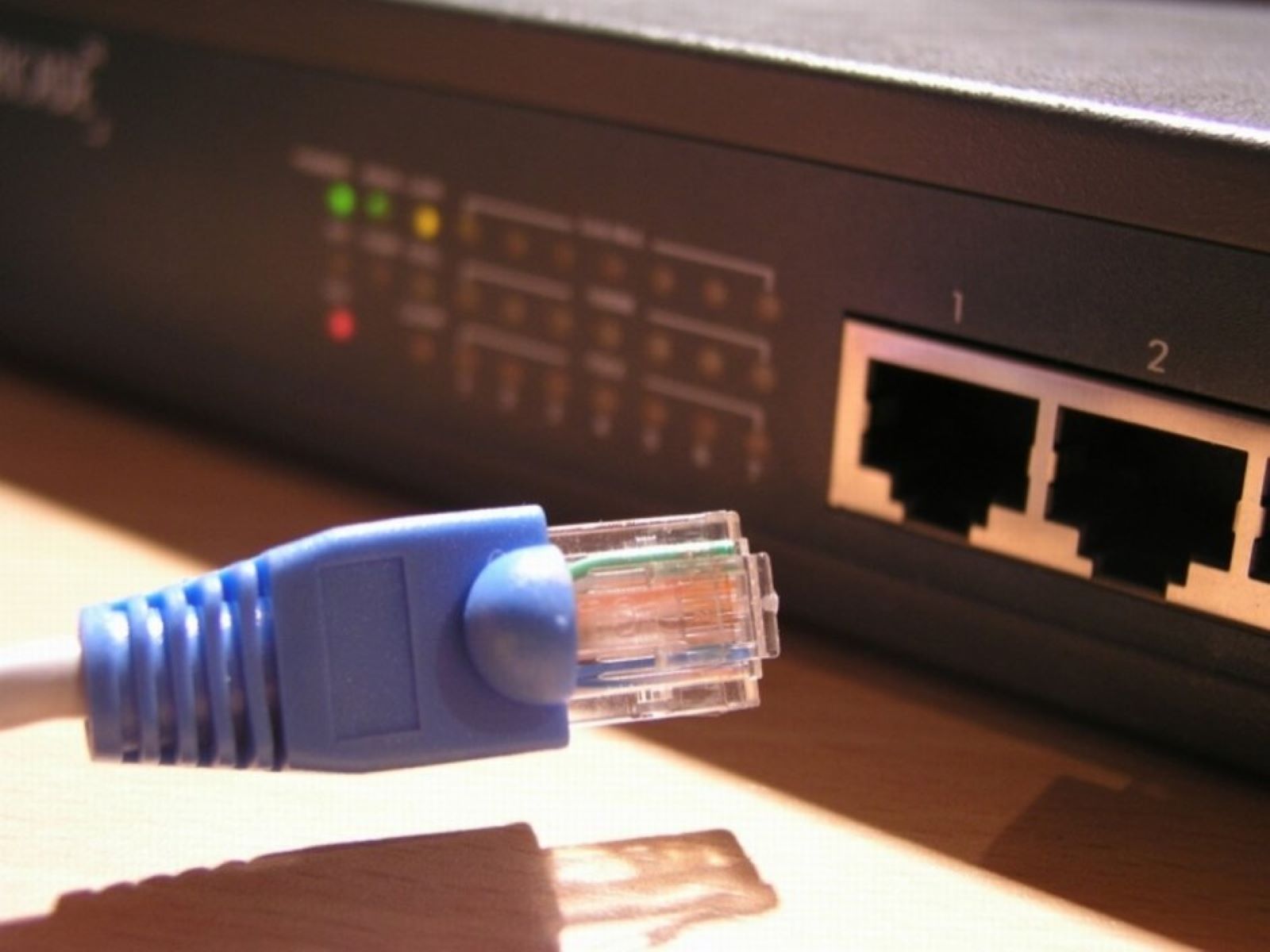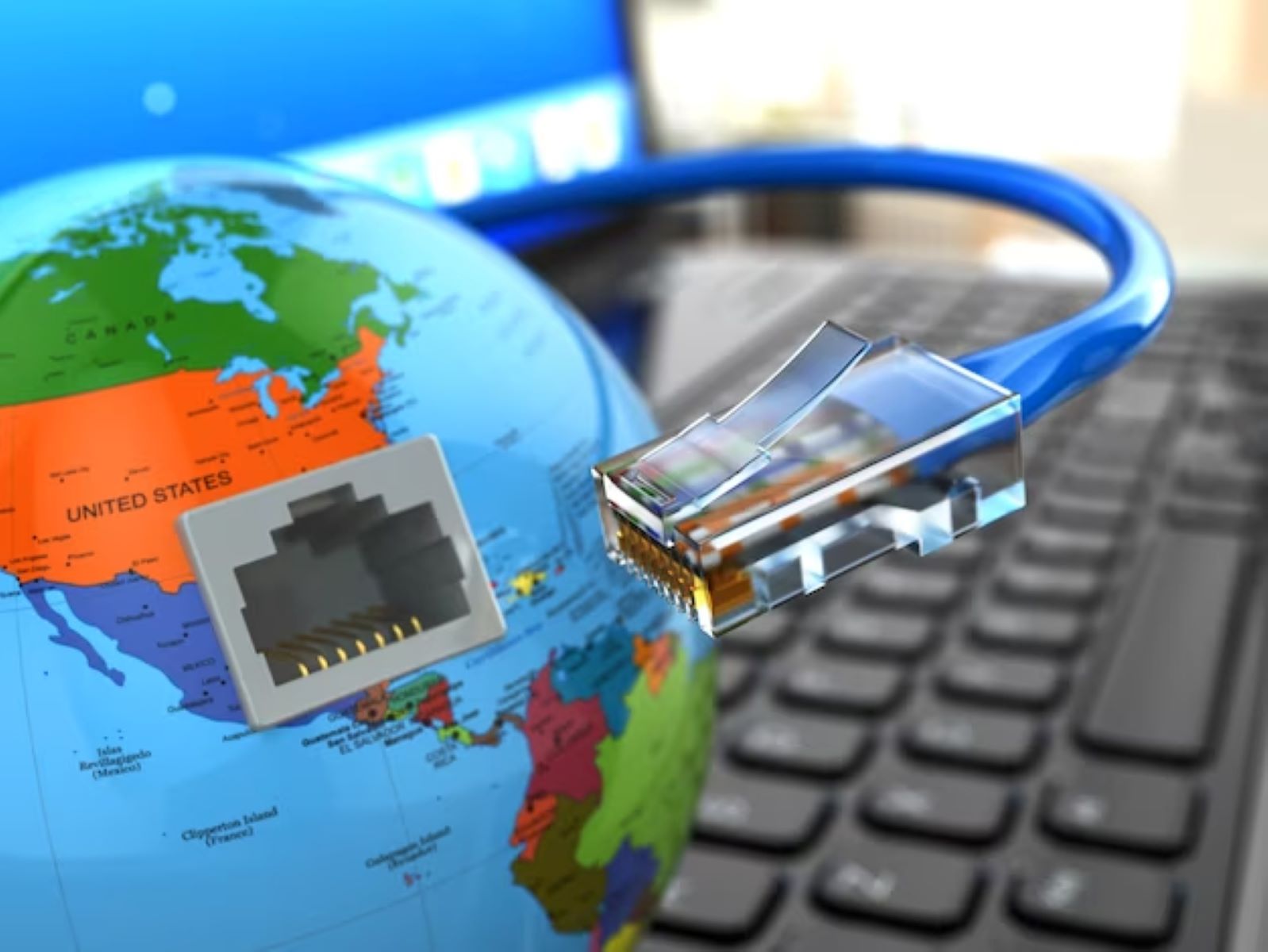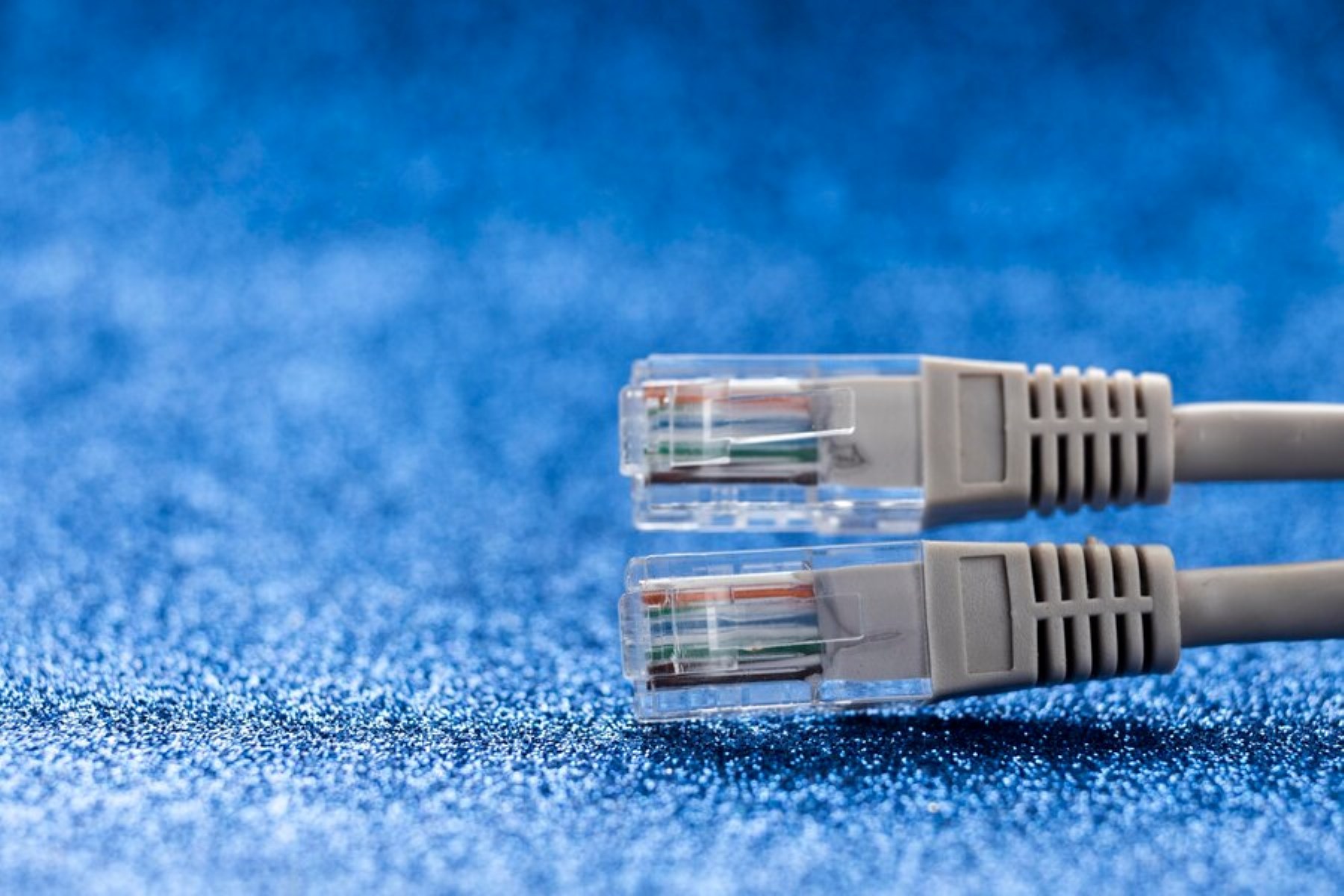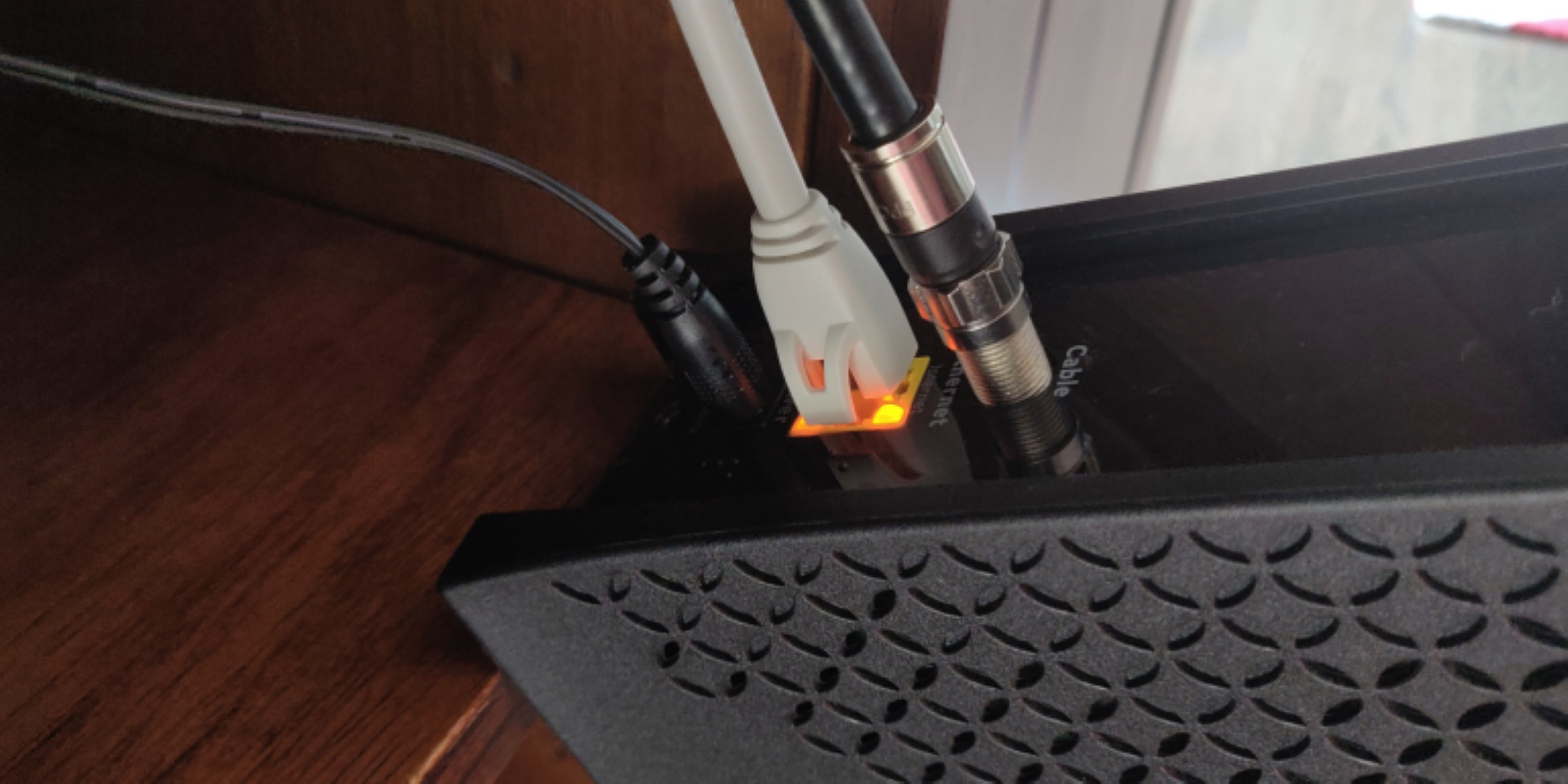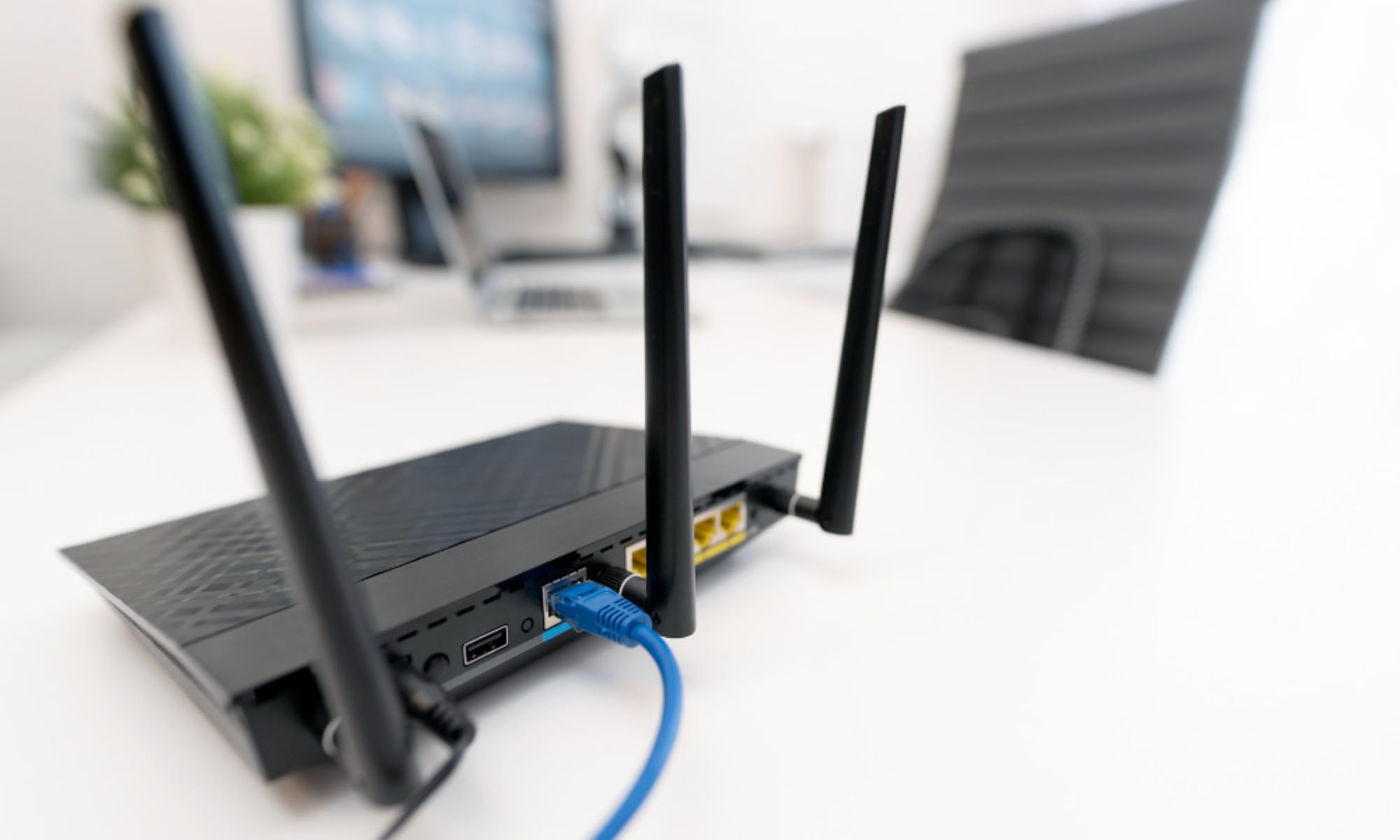Common Issues with Ethernet Connection
Having a reliable Ethernet connection is crucial for seamless internet access and smooth data transfer. However, there are several common issues that can interfere with the stability and functionality of your Ethernet connection. Understanding these issues can help you troubleshoot and resolve them effectively. Let’s explore some of the most frequent problems encountered with Ethernet connections:
- Loose Ethernet Cable: One of the most common issues is a loose Ethernet cable. If the cable is not securely plugged into the device’s Ethernet port or router, it can result in a weak or intermittent connection.
- Faulty Ethernet Adapter: A faulty Ethernet adapter can also cause issues. If the adapter is damaged or malfunctioning, it can prevent the connection from establishing properly.
- IP Configuration Problems: Incorrect IP configuration settings can lead to connectivity problems. If the IP settings are misconfigured, devices may not be able to communicate with each other on the network.
- Network Driver Issues: Outdated or incompatible network drivers can cause disruptions in the Ethernet connection. It’s important to keep the network drivers up to date to ensure optimal performance.
- Incorrect Network Settings: Incorrect network settings, such as an incorrect subnet mask or gateway address, can prevent devices from connecting to the network or accessing the internet.
- Interference from Other Devices: Other electronic devices, such as routers, wireless phones, or microwaves, can interfere with the Ethernet signal and degrade the connection quality.
- Hardware Compatibility Problems: Some hardware devices may have compatibility issues with certain Ethernet cables or adapters. Incompatibility between devices can result in a non-functional Ethernet connection.
- Cable Length Limitations: Ethernet cables have length limitations, and exceeding these limitations can cause signal degradation or complete connection failure. It’s important to ensure the cable length is within the specified limits.
- Malware or Viruses: Malware or viruses on a device can negatively impact the Ethernet connection. They can manipulate network settings or consume network resources, leading to connectivity issues.
- ISP Outage or Network Maintenance: Sometimes, the Ethernet connection issues may not be within the control of the user. ISP outages or network maintenance can result in temporary disruptions in the connection.
These are just a few of the common issues that can arise with Ethernet connections. By identifying the specific problem, you can take the necessary steps to fix it and restore a reliable Ethernet connection. In the following section, we will explore some troubleshooting steps to help you resolve these issues.
Loose Ethernet Cable
A loose Ethernet cable is one of the most common causes of connectivity issues with an Ethernet connection. If the cable is not securely plugged into the device’s Ethernet port or the router, it can result in a weak or intermittent connection.
When the Ethernet cable is not properly connected, it can lead to a range of problems, including slow internet speeds, drops in the connection, or complete loss of connectivity.
To check if a loose Ethernet cable is the culprit, follow these steps:
- Inspect the Ethernet cable connections at both ends, ensuring that they are fully inserted into the Ethernet ports. Sometimes, the cable may appear connected, but it might not be inserted all the way.
- Gently push the cable into the Ethernet port on both devices to ensure a secure and snug fit. You should hear a small click indicating that the cable is securely plugged in.
- If you have multiple Ethernet ports on your router or device, try connecting the cable to a different port to rule out any issues with a specific port.
- If the cable is damaged or shows signs of wear and tear, try using a different Ethernet cable to see if that resolves the connectivity problem.
- Consider using a cable clip or a cable tie to secure the Ethernet cable in place, preventing it from getting accidentally unplugged or dislodged.
By ensuring that the Ethernet cable is tightly connected at both ends, you can eliminate any potential connectivity issues stemming from a loose cable. This simple step is often overlooked but can save you from unnecessary troubleshooting efforts.
Remember, even a slightly loose Ethernet cable can result in a degraded connection or intermittent problems. Taking the time to check and secure the cable connections can significantly improve the stability and performance of your Ethernet connection.
Faulty Ethernet Adapter
A faulty Ethernet adapter can be another common issue that causes problems with your Ethernet connection. The Ethernet adapter, also known as the network interface card (NIC), is responsible for facilitating the communication between your device and the network.
If the Ethernet adapter is damaged or malfunctioning, it can lead to a range of connectivity issues, including a complete loss of connection or a significantly reduced network performance.
To troubleshoot a faulty Ethernet adapter, consider the following steps:
- Ensure that the Ethernet adapter is securely inserted into the appropriate slot on your device. If it’s not properly seated, it can result in a weak or unstable connection.
- If you are using a laptop or a desktop with a removable Ethernet card, remove the adapter and re-insert it. This can help to re-establish a proper connection.
- Check the device manager on your computer to see if the Ethernet adapter is recognized and functioning correctly. Look for any warning or error symbols next to the adapter’s name, which might indicate a hardware issue.
- If the Ethernet adapter is integrated into your device’s motherboard, update the device’s BIOS firmware to ensure compatibility and optimal functionality.
- If possible, use another Ethernet adapter to test the connection. This will help determine if the issue lies with the adapter itself or with other factors.
If you suspect that the Ethernet adapter is indeed faulty, you may need to replace it with a new one. Consult with a computer technician or the manufacturer’s support website for further assistance and guidance.
It’s worth noting that sometimes the Ethernet adapter issues might be related to software conflicts or outdated drivers. In such cases, updating the drivers or reinstalling the software associated with the adapter might help resolve the problem.
By identifying and addressing a faulty Ethernet adapter, you can ensure a stable and reliable Ethernet connection. Remember to follow the manufacturer’s guidelines when troubleshooting or replacing hardware components to avoid voiding any warranties.
IP Configuration Problems
Incorrect IP configuration settings can often lead to connectivity problems with your Ethernet connection. The IP (Internet Protocol) address is a unique identifier assigned to each device on a network, allowing data to be transmitted and received.
When there are IP configuration problems, devices may have difficulty communicating with each other, resulting in a loss of connectivity or limited network access.
To troubleshoot IP configuration problems, follow these steps:
- Check the IP configuration settings on your device. To do this, go to the network settings or adapter properties and ensure that the IP address, subnet mask, and gateway address are correctly entered.
- If you are using a dynamic IP address (automatically assigned by the router or DHCP server), try renewing the IP lease. This can be done by accessing the network settings or using the Command Prompt and typing the command “ipconfig /renew”.
- If you are using a static IP address (manually configured), double-check that the IP address, subnet mask, and gateway address are entered accurately. Any mismatch or incorrect entry can cause communication issues.
- Consider resetting the TCP/IP stack, which can help resolve IP-related issues. Open the Command Prompt and type the command “netsh int ip reset”. Restart your device after the command execution is completed.
- If you are on a corporate network, contact your network administrator for assistance. They can check the DHCP server settings or provide you with the correct IP configuration details.
It’s essential to ensure that the IP configuration settings on your device are accurate and aligned with the network requirements. Misconfigured IP settings can prevent devices from connecting to the network or accessing the internet.
If you are still experiencing IP configuration problems after attempting these troubleshooting steps, it might be necessary to consult with a network professional for further assistance.
Network Driver Issues
Network driver issues can cause disruptions in the functionality of your Ethernet connection. Network drivers are software components that facilitate communication between the operating system and the network hardware, including the Ethernet adapter.
Outdated, incompatible, or corrupt network drivers can result in a variety of problems, such as slow internet speeds, intermittent connectivity, or the inability to connect to the network altogether.
To address network driver issues, consider the following steps:
- Check if your network drivers are up to date. Visit the manufacturer’s website or use a driver update software to download and install the latest version of the network drivers compatible with your operating system.
- If you recently updated your operating system, ensure that the network drivers are compatible with the new version. Incompatibility between the OS and drivers can cause connectivity issues.
- If updating the network drivers does not resolve the issue, try uninstalling and then reinstalling them. This can help fix any corrupt files or configurations that may be causing problems.
- If you have recently installed any software or made changes to your system, such as installing a new antivirus program, firewall, or VPN client, they may be conflicting with the network drivers. Disable or uninstall such software temporarily to diagnose if they are the cause of the issue.
- Consider rolling back the network drivers to a previous version if you have recently updated them. Sometimes, newer versions can introduce compatibility or stability issues.
Regularly updating and maintaining your network drivers is essential for optimal Ethernet connection performance. By ensuring that you have the latest compatible drivers installed, you can mitigate network driver-related issues and maintain a stable and reliable Ethernet connection.
If you are unsure or uncomfortable updating or reinstalling network drivers on your own, seeking assistance from a professional or contacting the manufacturer’s support team can provide further guidance.
Incorrect Network Settings
Incorrect network settings can lead to connectivity problems and hinder the functionality of your Ethernet connection. Network settings include various parameters such as the subnet mask, gateway address, DNS server settings, and more, which need to be accurately configured for seamless communication.
When network settings are misconfigured, devices may struggle to connect to the network or access the internet effectively.
To troubleshoot incorrect network settings, follow these steps:
- Ensure that the subnet mask is correctly entered in the network settings. The subnet mask determines the size of the network and allows devices to identify whether they are on the same network or a different one.
- Verify that the gateway address is accurate. The gateway address is the IP address of the device responsible for routing data outside of the local network. If the gateway address is incorrect, devices may be unable to access the internet.
- Check the DNS server settings. DNS (Domain Name System) servers convert human-readable domain names into IP addresses. Incorrect DNS settings can hinder the translation process and prevent proper internet connectivity. Consider using public DNS servers like Google DNS (8.8.8.8 and 8.8.4.4) or OpenDNS (208.67.222.222 and 208.67.220.220).
- Ensure that you have not inadvertently enabled any proxy server settings. Proxy servers can redirect network traffic and cause connectivity issues if misconfigured or unnecessary.
- Consider resetting your router to its default settings. This can help eliminate any erroneous configurations that may be causing the incorrect network settings.
It’s important to double-check and rectify any incorrect network settings to ensure proper communication and connectivity. Accurate network settings are crucial for devices to connect to the network, access the internet, and communicate with other devices seamlessly.
If you are unsure about the correct network settings or require assistance, consulting with a network professional or contacting your Internet Service Provider (ISP) can provide further guidance in resolving the issue.
Interference from Other Devices
Interference from other electronic devices can disrupt the signal and degrade the quality of your Ethernet connection. Various devices in your surroundings, such as routers, wireless phones, microwaves, and even neighboring Wi-Fi networks, can interfere with the Ethernet signal and impact its stability.
When interference occurs, you may experience slow internet speeds, intermittent connectivity, or a complete loss of connection.
To address interference from other devices, consider the following steps:
- Ensure that your Ethernet cables are away from any sources of interference. Avoid running them parallel to power cables, near equipment with strong electromagnetic fields, or in close proximity to devices that emit electromagnetic radiation.
- Relocate your router or Ethernet devices away from other electronic devices. Separating them can help minimize interference and optimize the strength and quality of the Ethernet signal.
- If you have a wireless router, try changing the channel it operates on. This can help avoid conflicts with neighboring wireless networks that may be causing interference.
- If possible, use shielded Ethernet cables. Shielded cables are designed to reduce electromagnetic interference and can help improve the overall signal quality.
- Consider using powerline adapters or Ethernet over powerline devices instead of traditional Ethernet cables. These devices use your existing electrical wiring to transmit the Ethernet signal, minimizing the impact of interference from other devices.
By minimizing interference from other devices, you can enhance the stability and reliability of your Ethernet connection. Experimenting with different positioning, adjusting channel settings, and using shielded cables or alternative connectivity options can significantly improve your Ethernet signal’s performance.
If the interference persists and significantly affects your Ethernet connection, it may be worth consulting with a network specialist or contacting your ISP for further assistance in resolving the issue.
Hardware Compatibility Problems
Hardware compatibility problems can contribute to issues with your Ethernet connection. In some cases, certain hardware devices may not be fully compatible with the Ethernet cables or adapters you are using, resulting in a non-functional or unreliable connection.
When hardware compatibility problems arise, you may experience intermittent connectivity, slow speeds, or an inability to establish a working Ethernet connection.
To address hardware compatibility problems, consider the following steps:
- Ensure that the Ethernet cable you are using is compatible with your devices. Different devices may require specific types of Ethernet cables, such as Cat 5e, Cat 6, or Cat 7. Using the correct cable can prevent compatibility issues.
- Check if the Ethernet port on your device is compatible with the adapter or cable you are using. Some devices may have limitations on the maximum supported speed or cable type that can be used.
- Consider using Ethernet adapters that are specifically designed for your device. These adapters are more likely to be compatible and provide a seamless connection.
- If you are using an Ethernet switch or hub, make sure it is compatible with your devices and the network requirements. Incompatible switches can lead to connectivity issues or network bottlenecks.
- Update the firmware or BIOS of your devices. Manufacturers often release firmware updates that address compatibility issues and improve overall performance.
By ensuring hardware compatibility, you can eliminate potential roadblocks to a stable Ethernet connection. Using compatible cables, adapters, switches, and keeping the firmware up to date are essential steps in resolving hardware-related compatibility problems.
If you continue to experience hardware compatibility issues despite attempting these steps, consulting with a network specialist or contacting the manufacturer’s support team can provide further guidance and solutions.
Cable Length Limitations
Ethernet cables have specific length limitations that, when exceeded, can result in signal degradation or even complete loss of connectivity. The length restrictions vary depending on the type of Ethernet cable used, such as Cat 5, Cat 6, or Cat 7.
If you’re encountering connectivity issues with your Ethernet connection, cable length may be a crucial factor to consider.
To address cable length limitations, consider the following steps:
- Consult the specifications of your Ethernet cable to determine its maximum supported length. Cat 5 cables, for example, have a maximum length of 100 meters (328 feet), while Cat 6 cables can reach up to 55 meters (180 feet) for 10GBASE-T connections.
- Check if the cable length between your devices exceeds the maximum supported length. If it does, you may experience signal degradation or a total loss of connection.
- If the cable length exceeds the limitations, consider using a network switch or an Ethernet repeater to extend the range. These devices can amplify the signal and allow you to connect devices that are further apart.
- If possible, rearrange your setup to reduce the length of the Ethernet cable. Moving devices closer to each other or relocating your router can help ensure that cable length limitations are not surpassed.
It’s important to adhere to the recommended cable length limits to maintain a reliable and stable Ethernet connection. Excessive cable length can result in signal loss, increased packet errors, and reduced network performance.
If adjusting the cable length is not feasible, using alternative connectivity options such as fiber optics or Power over Ethernet (PoE) may help overcome distance limitations and ensure a successful Ethernet connection.
If you continue to experience connectivity issues even within the cable length limitations, consulting with a network specialist or contacting your ISP for further assistance can provide additional solutions to address the problem.
Malware or Viruses
Malware or viruses can pose a significant threat to the stability and security of your Ethernet connection. These malicious programs can manipulate network settings, consume network resources, or disrupt communication between devices, leading to connectivity issues.
If you suspect malware or viruses are causing problems with your Ethernet connection, consider the following steps:
- Perform a full system scan using reliable antivirus software. This will help detect and remove any malware or viruses that may be present on your device.
- Ensure that your antivirus software is up to date. Regularly updating your antivirus program can provide improved detection and protection against the latest threats.
- Use a dedicated malware removal tool to eliminate any stubborn malware or viruses that may not be detected by your antivirus software.
- Consider using a firewall to block unauthorized access and protect your device from external threats. A firewall adds an extra layer of security to your Ethernet connection.
- Check your device’s network settings and reset them if there are any suspicious or unfamiliar configurations. Malware or viruses can modify network settings to redirect traffic or interfere with network connectivity.
By addressing malware or virus-related issues, you can restore the integrity and functionality of your Ethernet connection. Regularly scanning your device for malware, keeping your antivirus software up to date, and practicing safe browsing habits can help minimize the risk of malware or virus infections.
If your device continues to experience connectivity issues even after removing malware or viruses, it may be necessary to seek assistance from a cybersecurity professional or contact your antivirus software support team for further assistance in resolving the problem.
ISP Outage or Network Maintenance
Sometimes, the connectivity issues with your Ethernet connection may not stem from any problems on your end but rather from an ISP (Internet Service Provider) outage or network maintenance in your area. These situations are beyond your control but can cause temporary disruptions to your Ethernet connection.
If you suspect that an ISP outage or network maintenance is affecting your Ethernet connection, consider the following steps:
- Contact your ISP to inquire about any reported outages or ongoing maintenance in your area. They may be able to provide you with information about the duration and expected resolution of the issue.
- Check your ISP’s website, social media accounts, or forums to see if they have posted any announcements regarding network outages or maintenance activities.
- Wait for a reasonable amount of time to allow your ISP to resolve the issue. In most cases, outages or maintenance activities are temporary and will be resolved by your ISP in due course.
- If the outage or maintenance is prolonged, consider using alternative methods for internet connectivity, such as mobile data or connecting to another available network, if possible.
It’s important to note that ISP outages or network maintenance are external factors that are out of your control. Patience and understanding are key during these situations, as your ISP will work to restore the connection as quickly as possible.
If you continue to experience connectivity issues even after the reported outage or maintenance period, it would be advisable to contact your ISP for further assistance and troubleshooting guidance.
Troubleshooting Steps
When encountering issues with your Ethernet connection, it’s important to follow specific troubleshooting steps to pinpoint and resolve the problem. Here are some general steps you can take to troubleshoot Ethernet connection problems:
- 1. Check Physical Connections: Ensure that all Ethernet cables are securely plugged into the appropriate ports on your devices and the router. A loose or improperly connected cable can lead to connectivity issues.
- 2. Restart Devices: Power cycling your devices, including the router, modem, and computer, can help refresh the network connection and resolve temporary glitches.
- 3. Update Network Drivers: Ensure that your network drivers are up to date. Outdated or incompatible drivers can cause issues with the Ethernet connection. Visit the manufacturer’s website to download and install the latest drivers.
- 4. Reset IP Configuration: Resetting the IP configuration can help resolve IP-related issues. Open the Command Prompt and type the command “ipconfig /release” followed by “ipconfig /renew”.
- 5. Disable Firewall or Antivirus Software: Temporarily disable your firewall or antivirus software and check if it resolves the issue. Sometimes, these security measures can interfere with the network connection.
- 6. Try a Different Ethernet Port or Cable: Switching to a different Ethernet port on your router or using a different Ethernet cable can help identify if the issue lies with a specific port or cable.
- 7. Test Ethernet Connection on Another Device: Connect your Ethernet cable to another device to determine if the problem is isolated to a specific device or if it persists across multiple devices.
- 8. Update Firmware or BIOS: Check for firmware or BIOS updates for your router or device. These updates can address compatibility issues and improve the overall performance of your Ethernet connection.
- 9. Scan for Malware or Viruses: Perform a thorough scan for malware and viruses on your device using reliable and up-to-date antivirus software.
- 10. Contact ISP for Assistance: If all else fails and you are unable to resolve the issue, contact your ISP for further troubleshooting assistance. They can provide guidance and support specific to your internet connection.
By following these troubleshooting steps, you can identify and resolve common Ethernet connection problems. However, if the issues persist or if you require more advanced troubleshooting, it may be necessary to seek assistance from a network professional or your Internet Service Provider (ISP).
Check Physical Connections
When troubleshooting Ethernet connection issues, the first step is to check the physical connections. Physical connection problems are a common cause of connectivity issues and can be easily fixed by ensuring that all cables are securely plugged in.
Here are some steps to follow when checking physical connections:
- Inspect both ends of the Ethernet cable. Make sure that the cable is properly inserted into the Ethernet ports on both the device and the router. A loose or partially inserted cable can result in a weak or unstable connection.
- Give the cable a gentle tug to ensure it is firmly connected. If it easily comes loose, reinsert it properly until you hear a click or feel a secure connection.
- If you are using a modular connector (RJ45) at either end of the cable, inspect the connector for any bent or damaged pins. Straighten any bent pins carefully or replace the connector if necessary.
- If you have multiple Ethernet ports on your router, try connecting the cable to a different port. A faulty port could be the reason for the connectivity issues.
- Inspect the Ethernet port on your device for any physical damage or debris. If you notice any debris, use compressed air or a soft cloth to clean it out gently.
- If you have access to another Ethernet cable, try using it to determine if the issue lies with the cable itself. Sometimes, a faulty or damaged cable can cause connectivity problems. If the new cable works, it indicates that the previous cable was the culprit.
- Consider using a cable tester or Ethernet network analyzer to verify the integrity of the Ethernet cable. These tools can help identify any wiring or connection issues that may be affecting the signal quality.
By checking the physical connections, you can ensure that the Ethernet cable is securely plugged in and that there are no apparent physical faults. Taking the time to inspect and properly connect the cables can effectively resolve many Ethernet connection issues.
If the physical connections appear to be correct, but the connectivity issue persists, it may be necessary to proceed to other troubleshooting steps to identify and resolve the problem.
Restart Devices
One of the simplest and most effective troubleshooting steps for resolving Ethernet connection issues is to restart the devices involved. This straightforward process can help refresh the network settings and resolve temporary glitches that may be causing connectivity problems.
Follow these steps to restart your devices:
- Shut down your computer or device that is experiencing the Ethernet connectivity issue. Make sure to save any ongoing work to prevent data loss.
- Turn off your router and modem by unplugging them from the power source. Wait for about 30 seconds to 1 minute to ensure that all residual power is drained.
- Once the waiting period is over, plug in the modem first and wait for it to fully boot up. This process may take a few minutes, so be patient.
- Next, plug in the router and allow it to fully boot up as well. Again, give it a few minutes to establish a stable connection.
- Once the router and modem are up and running, turn on your computer or device. Allow it to fully boot up and reconnect to the network.
Restarting devices can help clear temporary network glitches that may be causing the Ethernet connectivity issues. It allows the devices to establish a fresh connection and retrieve updated network configurations.
If restarting the devices resolves the connectivity issue, it indicates that it was likely caused by a temporary glitch. However, if the problem persists after the restart, further troubleshooting steps may be required.
Keeping in mind that restarting both the router and the device experiencing the connectivity issue is essential since both devices can contribute to Ethernet connection problems. Regularly restarting your devices can also prevent potential future issues by refreshing the network settings.
Update Network Drivers
Outdated or incompatible network drivers can often be the cause of Ethernet connection issues. Network drivers enable communication between your operating system and the network hardware, including the Ethernet adapter. Updating these drivers ensures compatibility and can resolve common connectivity problems.
Follow these steps to update your network drivers:
- Determine the make and model of your network adapter. You can find this information in the Device Manager on Windows or the System Information tool on macOS.
- Visit the website of the network adapter’s manufacturer or the computer manufacturer’s website if it is an integrated adapter.
- Locate the latest driver for your specific network adapter model and download it. Ensure that the driver is compatible with your operating system version.
- Once the driver file is downloaded, run the installer and follow the on-screen instructions to complete the installation process.
- Restart your computer to finalize the driver update and allow the changes to take effect.
Updating network drivers helps resolve compatibility issues, adds new features, enhances performance, and eliminates bugs or vulnerabilities that may be causing Ethernet connectivity problems.
Alternatively, you can also use driver update software that automatically scans your system, identifies outdated drivers, and installs the latest versions. This can simplify the process and ensure all drivers are up to date.
Regularly updating your network drivers is crucial for maintaining a reliable and stable Ethernet connection. By doing so, you ensure that your network adapter is equipped with the latest optimizations and improvements, improving its performance and compatibility.
If updating the network drivers does not resolve the connectivity issue, further troubleshooting may be required to identify and address the underlying cause.
Reset IP Configuration
Resetting the IP configuration can help resolve IP-related issues that may be causing Ethernet connection problems. The IP (Internet Protocol) configuration includes various network settings that determine how devices communicate with each other on the network.
Follow these steps to reset the IP configuration:
- Open the Command Prompt on your computer. On Windows, you can do this by searching for “Command Prompt” in the Start menu. On macOS, go to “Applications” > “Utilities” > “Terminal”.
- Enter the command “ipconfig /release” and press Enter. This command releases your current IP address and any associated configurations.
- After the release is complete, enter the command “ipconfig /renew” and press Enter. This command prompts your computer to obtain a new IP address from the router or DHCP server and refreshes the IP configuration.
- Wait for the IP renewal process to complete. You should see a new IP address assigned to your computer, along with the updated network configuration details.
- Test your Ethernet connection to see if the issue has been resolved. Try accessing the internet or connecting to other devices on the network to confirm the successful reset of the IP configuration.
Resetting the IP configuration can resolve issues such as conflicting IP addresses or incorrect network settings. It essentially restarts the network configuration process and allows for a fresh and accurate setup.
It’s worth noting that resetting the IP configuration only affects the local device and may not solve network-wide issues. If multiple devices on the network are experiencing connectivity problems, it may be necessary to address the router or network configuration instead.
If resetting the IP configuration does not resolve the Ethernet connectivity issue, further troubleshooting steps may be required to identify and address the underlying cause.
Disable Firewall or Antivirus Software
Firewall or antivirus software, while essential for protecting your computer from threats, can sometimes interfere with your Ethernet connection and cause connectivity issues. The software’s security measures may block network traffic or incorrectly identify network activity as a potential threat. Temporarily disabling the firewall or antivirus software can help determine if they are the cause of the problem.
Follow these steps to disable firewall or antivirus software:
- Locate the firewall or antivirus software icon in your system tray or taskbar and right-click on it.
- From the context menu, select “Disable,” “Turn Off,” or a similar option that temporarily disables the software’s protection. You may need to confirm the action or enter an administrator password.
- Once disabled, attempt to establish or restore your Ethernet connection to see if the issue has been resolved.
- If disabling the software resolves the connectivity issue, it indicates that the firewall or antivirus settings may be preventing proper network communication.
- To re-enable the firewall or antivirus software, follow the same steps but select the appropriate option to enable the protection again.
It’s important to note that disabling your firewall or antivirus software temporarily leaves your device more vulnerable to potential threats. Therefore, it is crucial to re-enable the protection once you have identified whether the software was causing the connectivity problem.
If disabling the firewall or antivirus software does not resolve the Ethernet connectivity issue, it signifies that the problem lies elsewhere, and further troubleshooting steps will be necessary to identify the cause.
Try a Different Ethernet Port or Cable
If you are experiencing Ethernet connectivity issues, it’s possible that a faulty Ethernet port or cable may be the culprit. Troubleshooting this involves trying different ports or cables to isolate the problem and ensure a stable connection.
Follow these steps to try a different Ethernet port or cable:
- Identify an alternative Ethernet port on your router or switch. Ensure that it is available and not currently in use.
- Disconnect the Ethernet cable from its current port and insert it into the alternative port. Make sure to insert it securely for a stable connection.
- Test the Ethernet connection to determine if the issue persists. Monitor the connectivity and assess if the new port has resolved the problem.
- If the issue persists, consider trying a different Ethernet cable altogether. Disconnect the current cable from both ends and replace it with a new or known-working cable.
- Again, test the Ethernet connection to see if using a different cable resolves the issue. This step helps identify if the original cable was causing the connectivity problem.
By trying a different Ethernet port or cable, you can determine if the issue lies with a specific port or cable. A faulty port may not establish a proper connection, while a damaged or defective cable can result in intermittent or no connectivity at all.
Remember to secure the connections properly by inserting the cable snugly into the Ethernet port. Loose or partially connected cables can lead to unstable connectivity.
If trying a different Ethernet port or cable resolves the connectivity issue, you can replace the faulty port or cable as necessary. However, if the problem persists, further troubleshooting steps may be required to identify and address the underlying cause.
Test Ethernet Connection on Another Device
If you are experiencing Ethernet connectivity issues, it’s important to determine whether the problem is specific to one device or affects multiple devices. By testing the Ethernet connection on another device, you can isolate the issue and identify whether it lies with the device itself or the network setup.
Follow these steps to test the Ethernet connection on another device:
- Identify another device, such as a laptop or another computer, that has an Ethernet port.
- Disconnect the Ethernet cable from the current device and connect it to the Ethernet port on the other device. Ensure that the connection is secure.
- Power on the device and wait for it to boot up. Allow the device to establish a connection with the network.
- Test the Ethernet connection on the other device. Verify if it can access the internet, connect to network resources, or communicate with other devices on the network.
- Monitor the connection on the alternate device to see if it exhibits the same connectivity issues that you encountered on the original device.
By testing the Ethernet connection on another device, you can determine if the issue is specific to a particular device or if it affects multiple devices on the network. If the alternate device experiences the same issues, it indicates that the problem lies with the network setup or the Ethernet cable itself.
If the Ethernet connection works fine on the other device, it suggests that the problem is specific to the original device. In this case, additional troubleshooting steps, such as updating network drivers or checking for software conflicts, may be necessary to address the issue.
Testing the Ethernet connection on another device helps narrow down the scope of the problem and guides further troubleshooting efforts to diagnose and resolve the connectivity issues effectively.
Update Firmware or BIOS
Outdated firmware or BIOS (Basic Input/Output System) can sometimes cause connectivity issues with your Ethernet connection. Firmware refers to the software embedded in the hardware devices, such as routers or Ethernet adapters, while the BIOS is responsible for initiating hardware during system startup.
Follow these steps to update the firmware or BIOS:
- Identify the manufacturer and model of your router or device that requires a firmware or BIOS update. You can typically find this information in the device’s documentation or on the manufacturer’s website.
- Visit the manufacturer’s website and navigate to the support or downloads section.
- Search for the latest firmware or BIOS update specifically for your device’s model and download it.
- Follow the manufacturer’s instructions to install the firmware or BIOS update on your device. This process may vary, but it often involves running an executable file or uploading the firmware through the device’s web interface.
- Allow the update process to complete, and then restart your device.
Updating the firmware or BIOS can resolve compatibility issues, improve performance, and address known bugs or vulnerabilities. It ensures that your device has the latest optimizations and enhancements for Ethernet connectivity.
It’s worth noting that updating the firmware or BIOS carries some inherent risks. If not done correctly or if the update process is interrupted, it could potentially render the device inoperable. Therefore, it is essential to follow the manufacturer’s instructions carefully and ensure a stable power supply during the update process.
If the firmware or BIOS update doesn’t resolve the Ethernet connectivity issue, further troubleshooting steps may be necessary to identify and address the underlying cause.
Scan for Malware or Viruses
Malware or viruses can significantly impact the functionality of your Ethernet connection. These malicious entities can interfere with network settings, consume network resources, and compromise the security of your system. Therefore, it is crucial to regularly scan your device for malware or viruses to detect and remove any potential threats.
Follow these steps to scan for malware or viruses:
- Ensure that your antivirus software is up to date. If you don’t have antivirus software installed on your device, consider installing a reputable antivirus program.
- Open your antivirus software and navigate to the scanning options. Choose a full system scan to thoroughly examine all files and processes on your device.
- Start the scan and allow the antivirus software to scan your entire system for malware or viruses. This process may take some time, depending on the size of your hard drive and the number of files to be scanned.
- If the antivirus program detects any malware or viruses during the scan, follow the prompts to remove or quarantine the threats.
- Once the scan and removal process is complete, restart your device to ensure that any residual malware or viruses are effectively eliminated.
Regularly scanning for malware or viruses helps maintain the security and integrity of your system. It can also help resolve potential issues that may be affecting your Ethernet connection. Malicious software can modify network settings, disrupt network communication, and lead to connectivity problems.
If your antivirus software doesn’t detect any malware or viruses and the Ethernet connectivity issue persists, further troubleshooting may be required to identify and resolve the underlying cause.
Contact ISP for Assistance
If you have exhausted all troubleshooting steps and are still experiencing Ethernet connectivity issues, it may be necessary to contact your Internet Service Provider (ISP) for assistance. ISPs have support teams dedicated to resolving network-related problems and can provide further guidance and troubleshooting specific to your internet connection.
Follow these steps to reach out to your ISP:
- Locate the customer support contact information for your ISP. This can typically be found on their website, on your monthly bill, or in the documentation provided when you signed up for their services.
- Place a call to your ISP’s customer support line. Be prepared to provide your account details and describe the symptoms of the Ethernet connectivity issues you are experiencing.
- Follow the instructions provided by the support representative. They may guide you through additional troubleshooting steps, schedule a service visit if necessary, or escalate the issue to higher-level technicians.
- Ask for a reference number or ticket number for your support request. This will help you track the progress of your case should you need to follow up later.
- If possible, keep a record of your communication with the ISP, including dates, times, and the names of the support representatives you spoke with. This can be helpful if you need to provide further information or escalate the matter.
Contacting your ISP for assistance is important, especially if the Ethernet connectivity issues persist despite your efforts. They have the resources and expertise to diagnose and resolve network-related problems that can affect your connection.
Be patient during the process, as it may take some time to investigate and resolve the issue, especially if it involves wider network problems or infrastructure maintenance. Stay in touch with your ISP until the issue is fully resolved.
Remember to keep any scheduled appointments, and promptly follow up if you encounter any delays or difficulties in resolving the Ethernet connectivity issues with your ISP.







